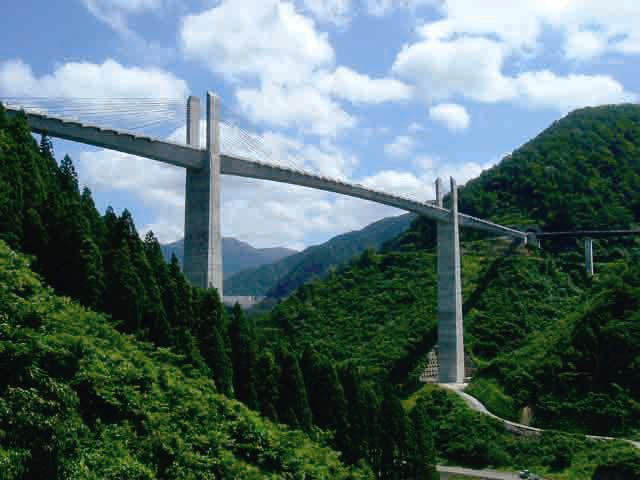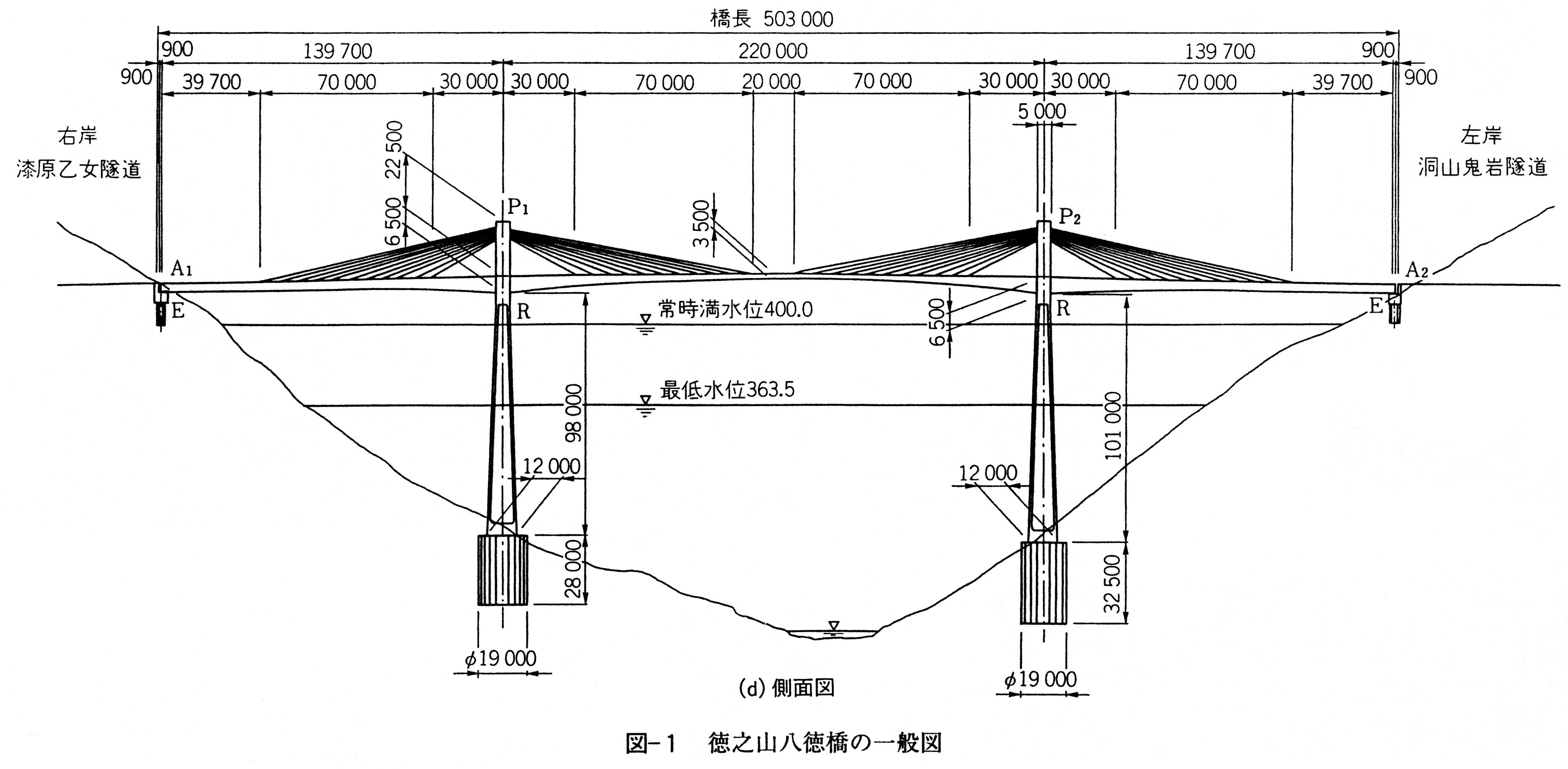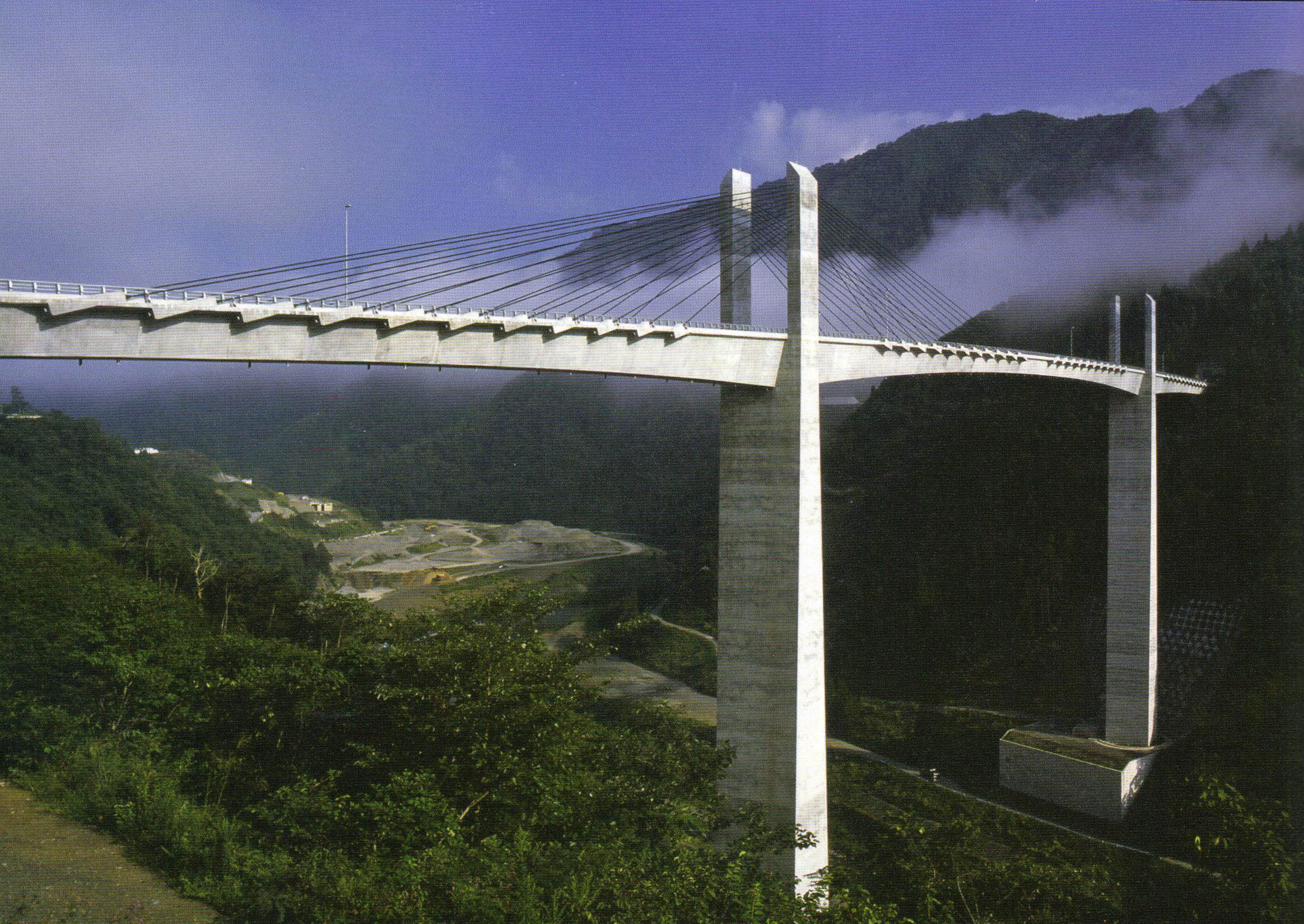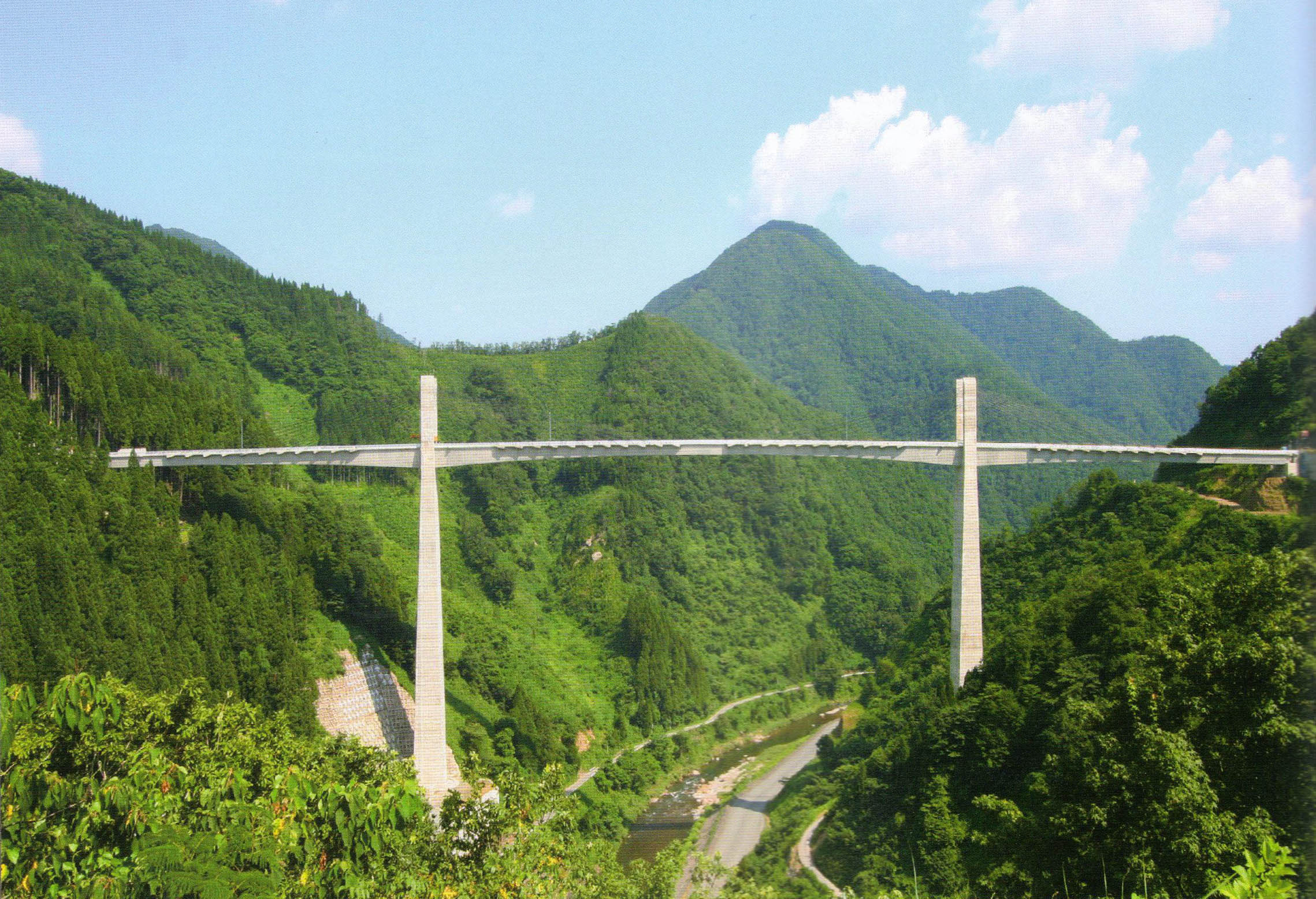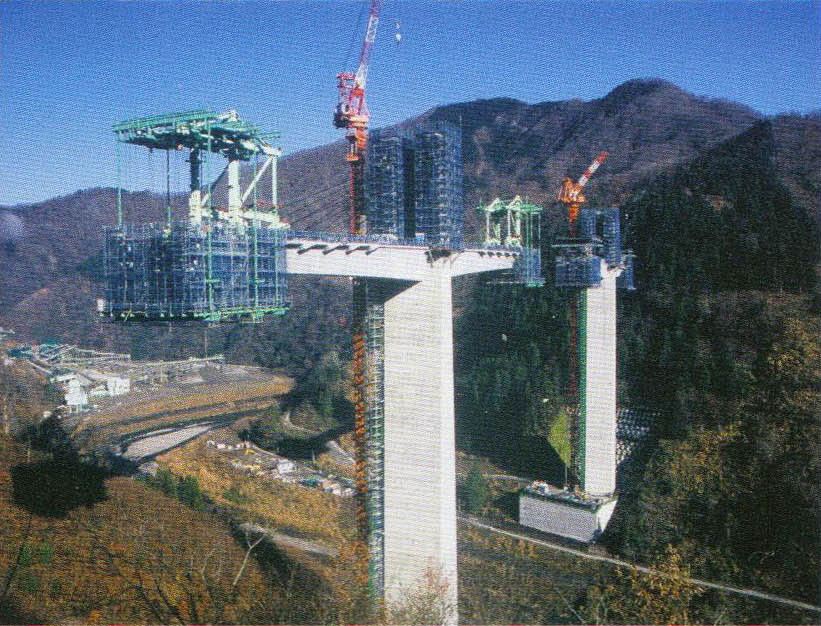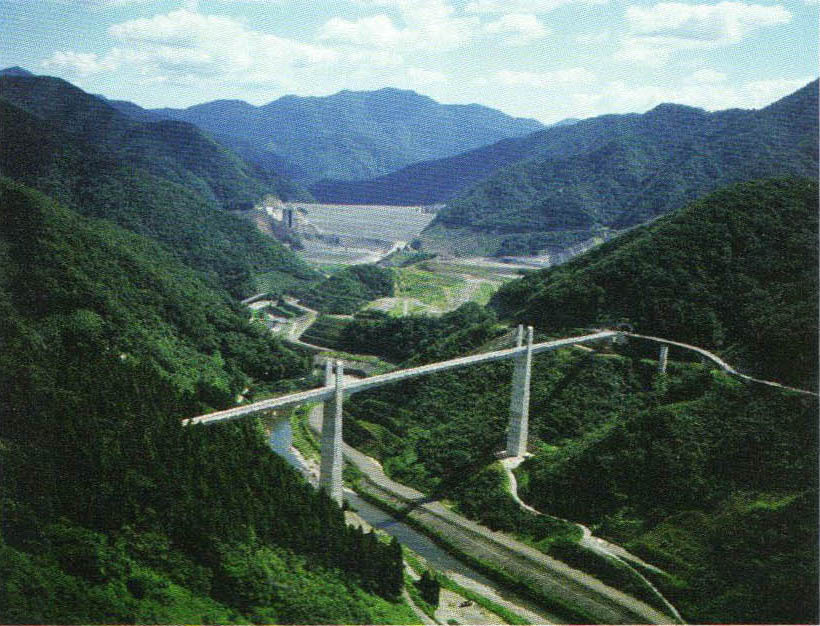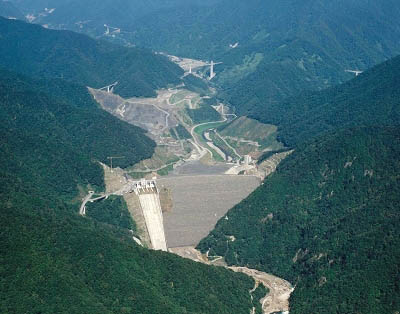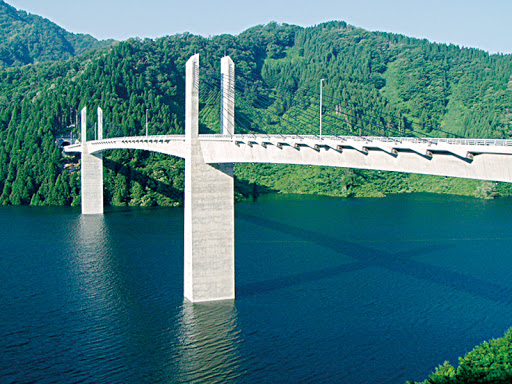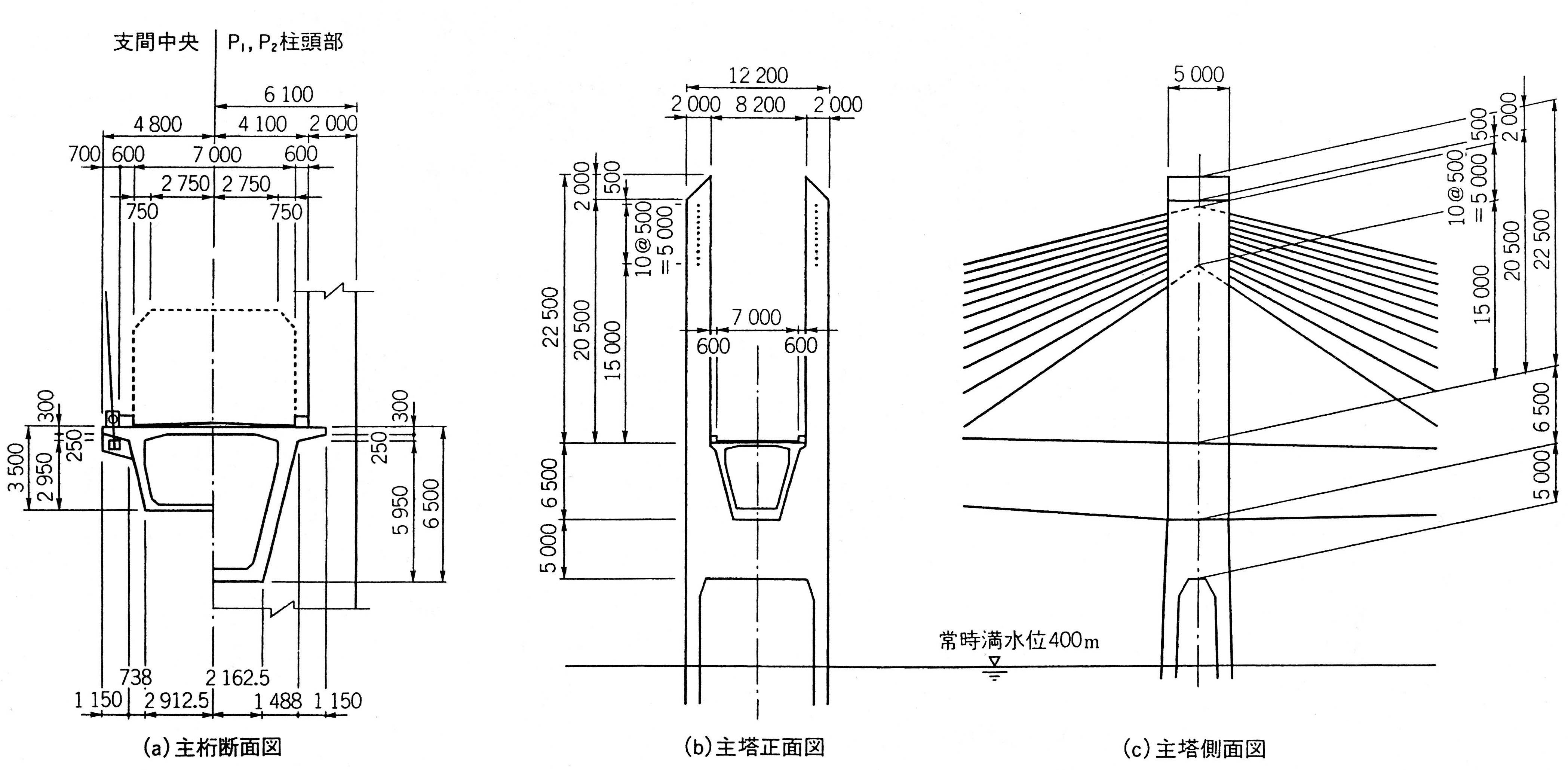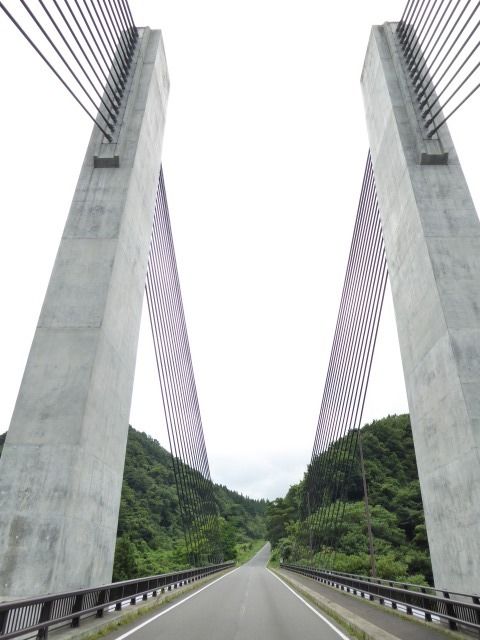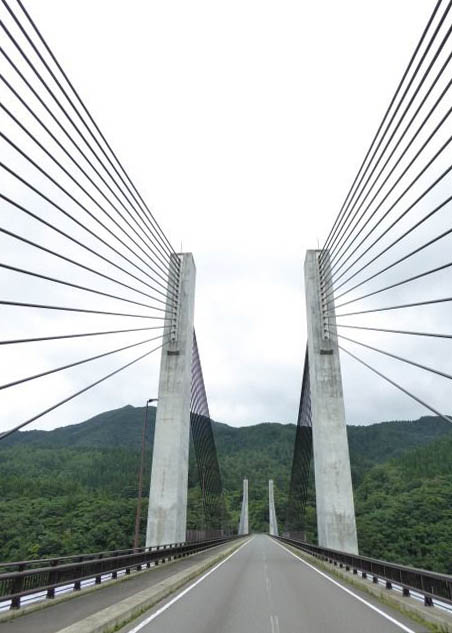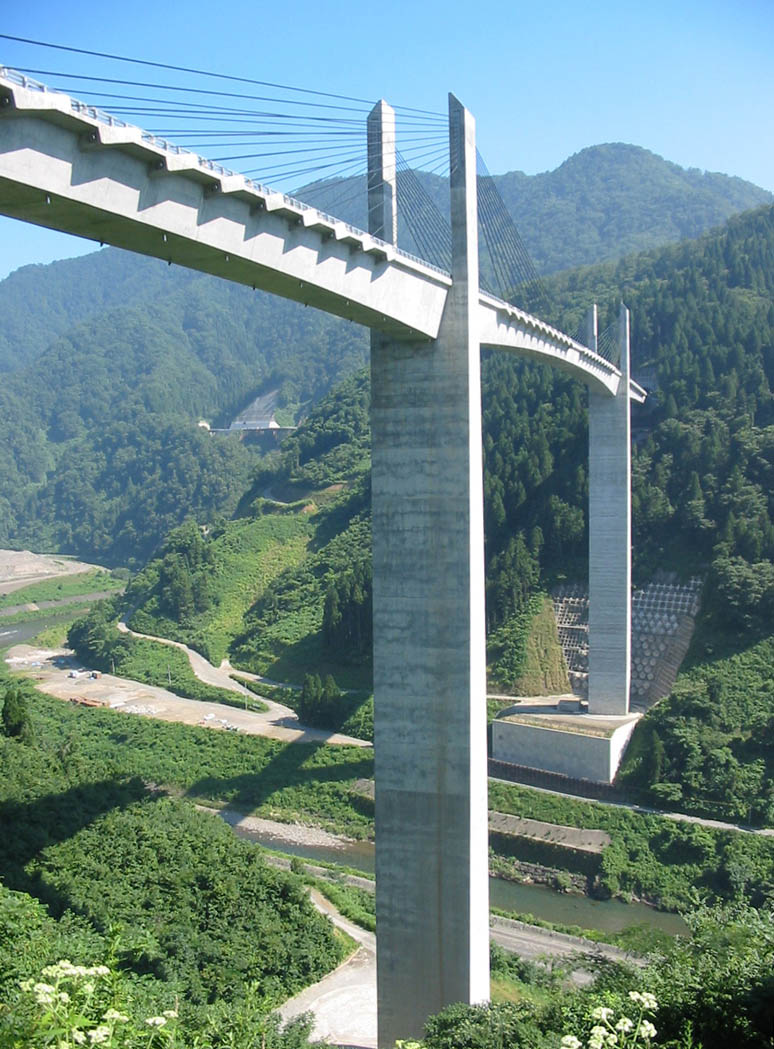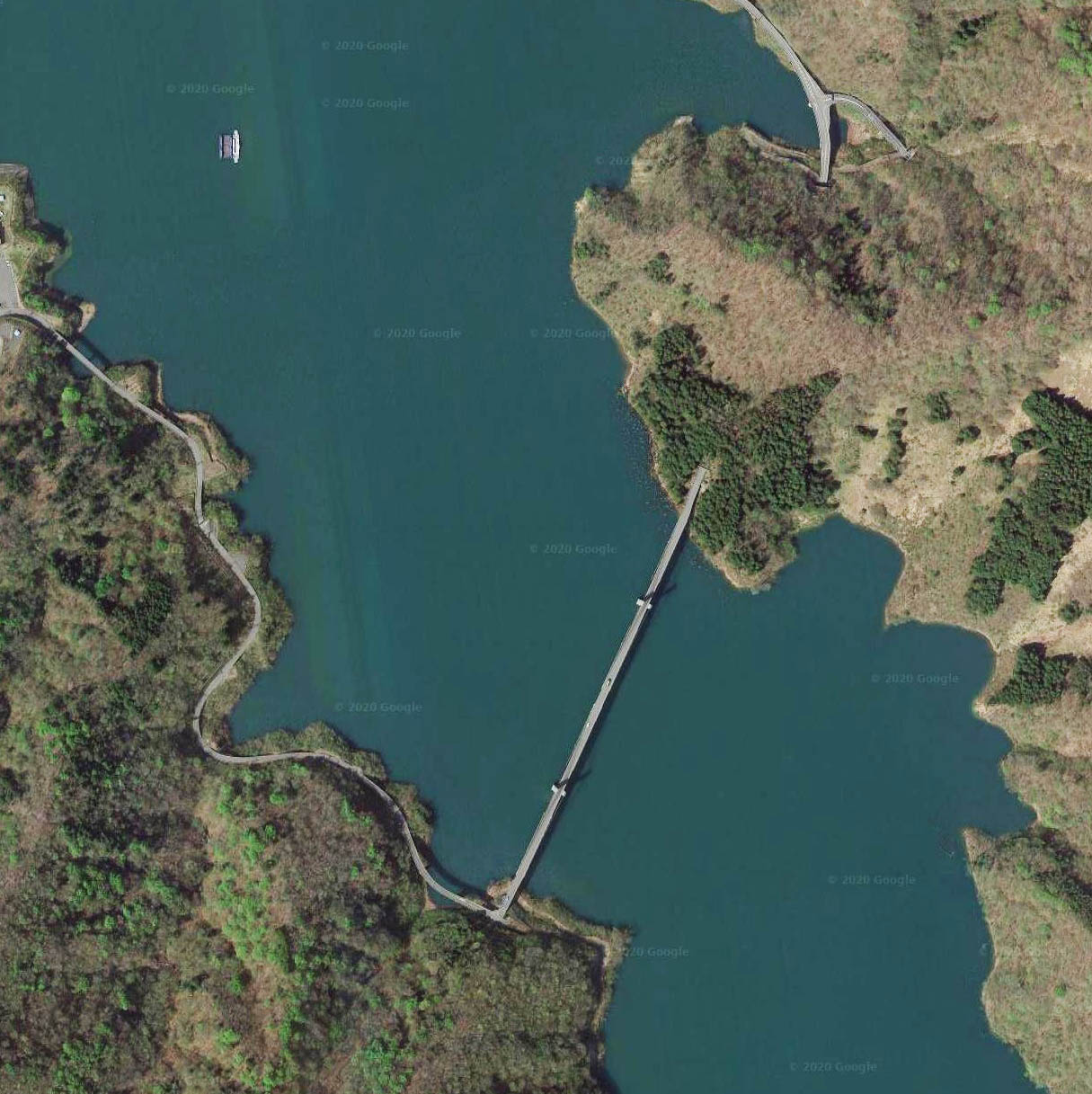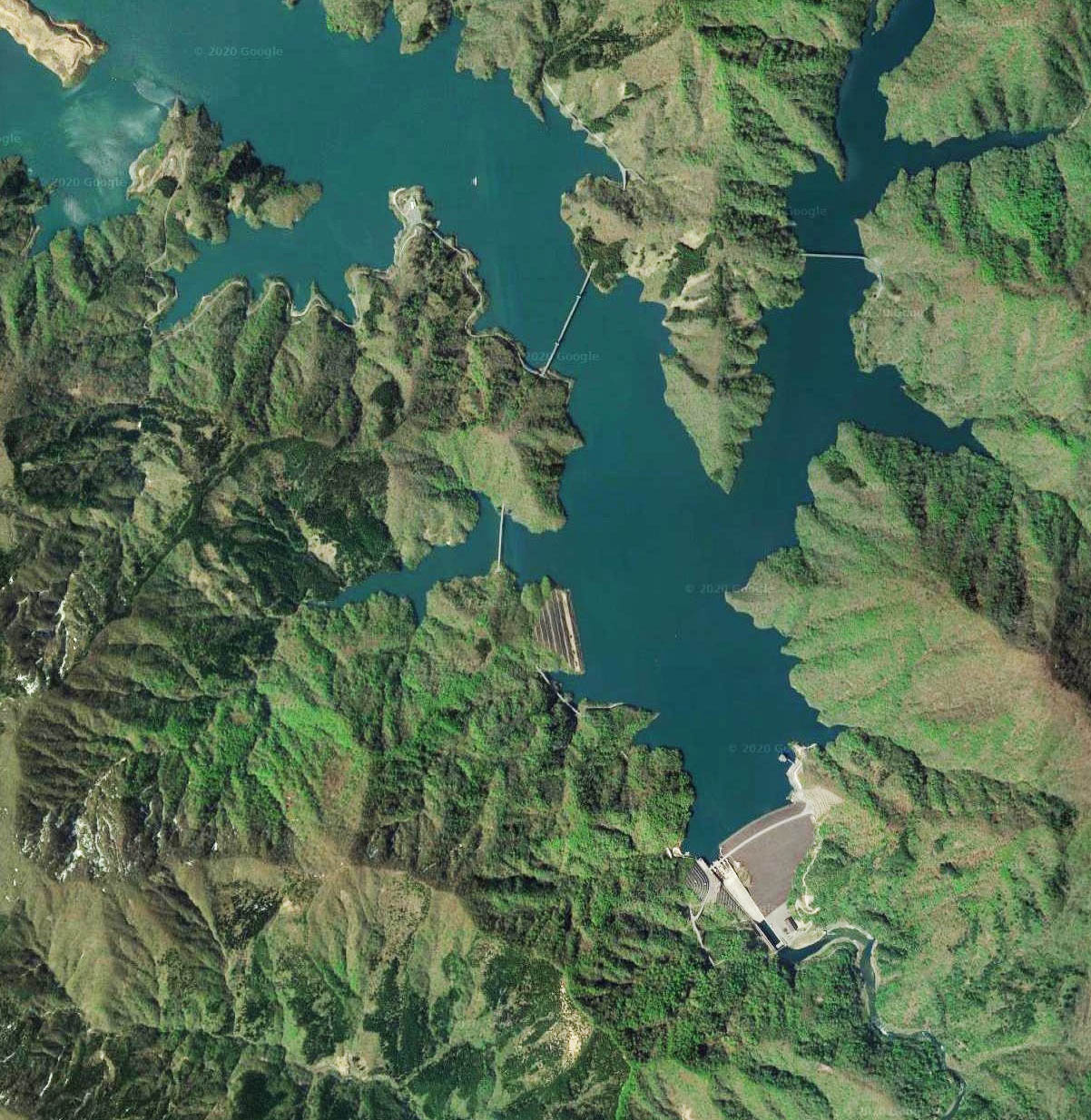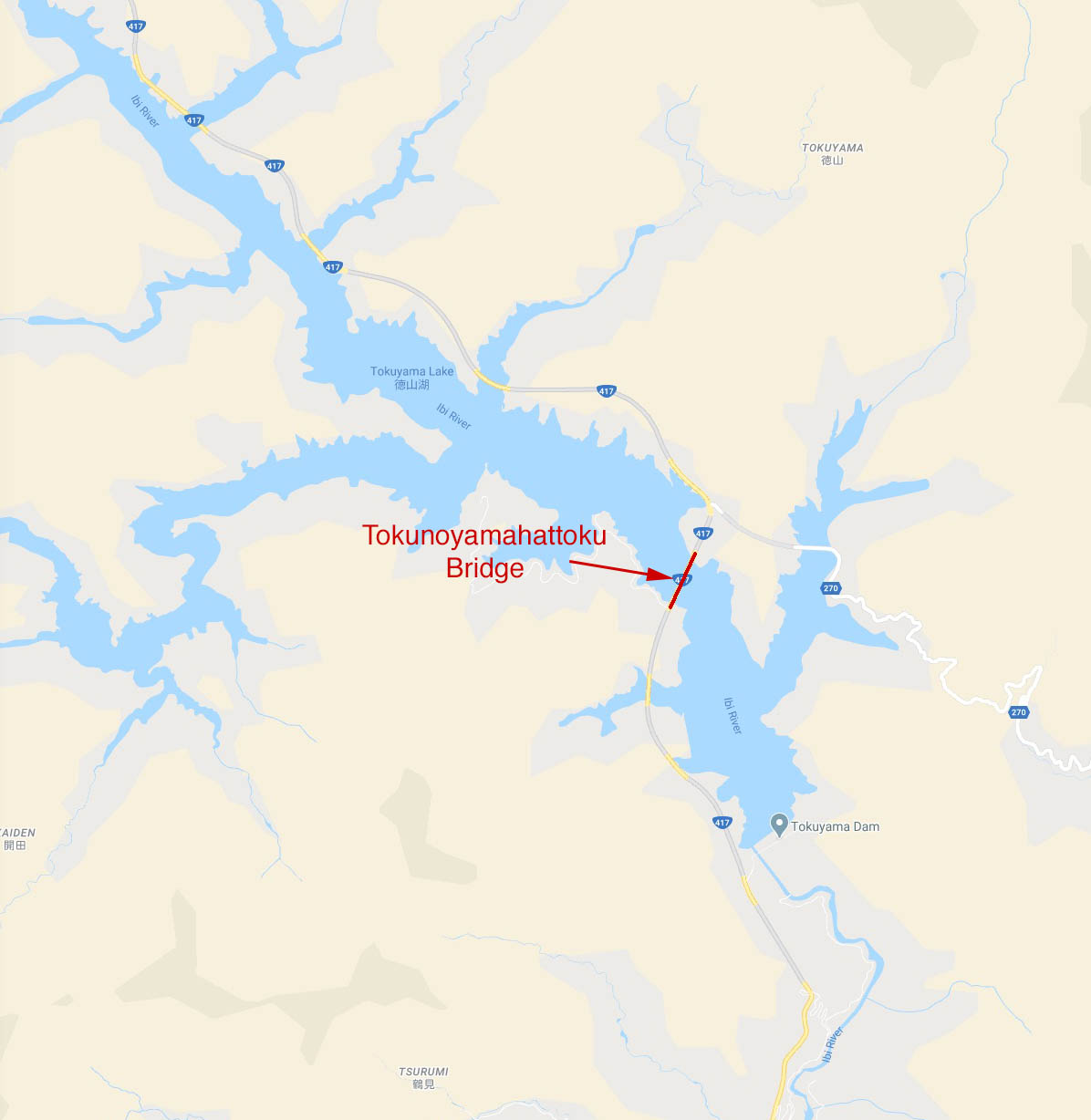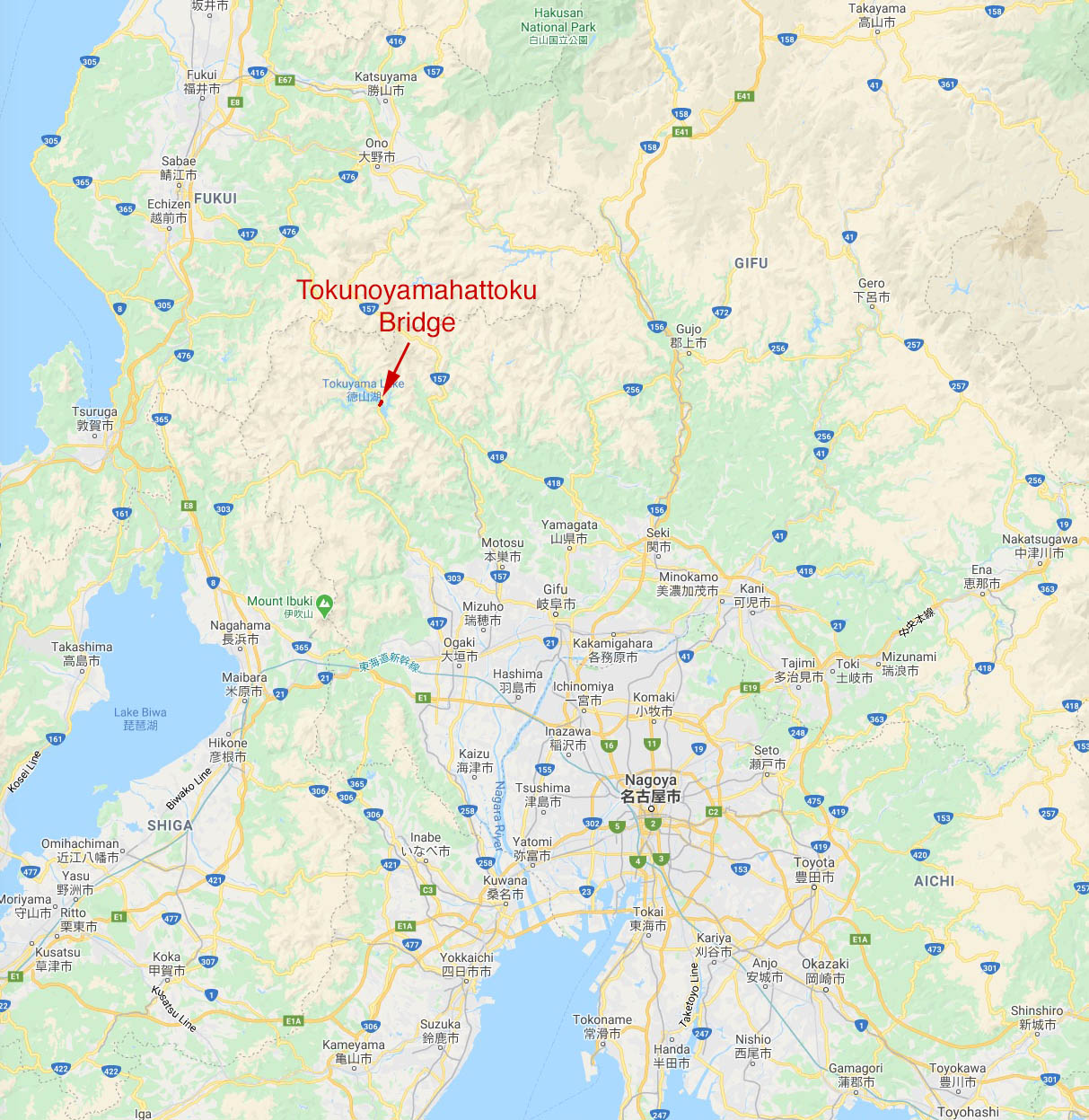Tokunoyamahattoku Bridge
Tokunoyamahattoku Bridge
徳之山八徳橋
Fujihashi, Gifu, Japan
480 feet high / 146 meters high
722 foot span / 220 meter span
2006
Completed in 2006, the Tokunoyama Hattoku bridge is the highest reservoir bridge in Japan and has one of the longest extradosed bridge spans in the world at 722 feet (220 mtrs). Constructed during the same time period as the new Tokuyama Dam, the 480 foot (146 mtr) high structure carries a local prefectural road across the Ibigawa River. The original road along the bank of the river is now hidden under hundreds of feet of water. Also submerged beneath the waters of this huge bathtub are two of Japan’s highest bridge piers at 328 feet (100 mtrs). The graceful and stylish span could have enjoyed some fame as Japan’s highest bridge but was beaten to the punch by the Kokonoe "Yume" Otsurihashi footbridge which also opened in 2006. Both bridges were surpassed in 2010 by the 590 foot (180 mtr) high Hiroshima Airport bridge.
It would only seem logical that Japan would have the highest extradosed bridge in the world. The Japanese built their first one in 1993 and now have more than 100 examples - more than every other country in the world combined. Extradosed bridges are a cross between a concrete beam bridge and a cable stayed bridge. Unlike a cable stayed bridge where the stays are spaced evenly across the entire deck from tower to tower, the center third of an extradosed bridge is usually devoid of cables as is the immediate area on either side of the main towers where there is always an open “window”. By relying much more on the strength of the thicker, prestressed concrete beam span below the roadway, extradosed bridges can have much shorter towers with fewer cables. Extradosed bridges are not suitable for long spans and they have been built primarily as a prettier alternative to the dull look of a pure beam bridge.
On Tokunoyama, the center of the box girder is 11.5 feet (3.5 mtrs) deep - about normal for a beam bridge of that length. The thickness over the piers, however, is 21 feet (6.5 mtrs) deep - about half the 40 foot (12 mtr) depth a normal prestressed concrete beam span would have been. The extradosed cable towers rise just 74 feet (22.5 mtrs) above the roadway, half the height of a cable stayed tower. Designed by Oriental Consultants, the Tokunoyama bridge was constructed by Oriental Shiraishi, Kawada Construction and Showa Concrete JV.
The lake has at least 5 other high beam bridges making for the most large scale bridges across any reservoir in Japan.
2006年に完成、徳之山八徳橋は貯水池橋として日本で最も高く、220mのエクストラドーズド橋の支柱は世界で最も長いものの一つです。新しい徳山ダムと同時期に建設され、146mの高さを持つ構造が揖斐川を横切る県道を支えます。川沿いの元々の道は、今は何百フィートもの水面下に隠れています。また、この巨大なバスタブの水面下に潜伏しているのは、日本で一番長い(100mほどの)二本の橋脚です。優美でスタイリッシュなスパンは、日本一高い橋としての名声を楽しむことができたことでしょう。しかし、同2006年には九重大つり橋も完成したため、日本一の名声を獲得することできませんでした。 九重大吊つり橋にパンチを食らったということでしょうか。2010年には、この二つの橋は180m高さのある広島空港大橋に越されることになります。
世界で最も高いエクストラドーズド橋が日本にあるのは当然のことかもしれません。日本が初めてこれを建てたのは1993年で、今は100以上の例があります。世界中にあるこの橋を集めても、日本の数には追いつきません。エクストラドーズド橋はコンクリートビーム橋とケーブルステイド橋のクロスです。タワーからタワーの全体のデッキに渡って支柱間に均等な間隔が置かれるケーブルステイド橋と違い、オープン“窓”がある主要タワーの一方の端への直接の場所として、中央部のエクストラドーズド橋には通常ケーブルがありません。路面下にある厚い、プレストレストコンクリートビームのスパンの強さに頼ることにより、エクストラドーズド橋は短いタワーと少ないケーブルで建ちます。エクストラドーズド橋はロングスパン向きではありません。当初、エクストラドーズド橋は外観が美しいことから、見た目に面白みのない真のビーム橋に対抗するもう一つの橋として建てられました。
徳之山八徳橋の中央の箱ガーダーは奥行き3.5mで、これはビーム橋として標準的です。しかし、橋脚の厚さは奥行き6.5mで、これは12m奥行きのプレストレスト・コンクリートビームスパンの約半分ということになります。エクストラドーズドのケーブルタワーは22.5mほど道路面上より高くなっています。これは、ケーブルステイド橋の半分の高さです。オリエンタルコンサルタンツによりデザインされた、徳之山八徳橋は、オリエンタル白石、川田建設そして昭和コンクリートJVにより架設されました。
Image by Japanese Society of Civil Engineers.
Image by Japanese Society of Civil Engineers.
Image by Japanese Society of Civil Engineers.
Image by Japanese Society of Civil Engineers.
Tokuyama Dam and Lake.
Tokunoyamahattoku Bridge satellite image.
Tokunoyamahattoku Bridge location map.
